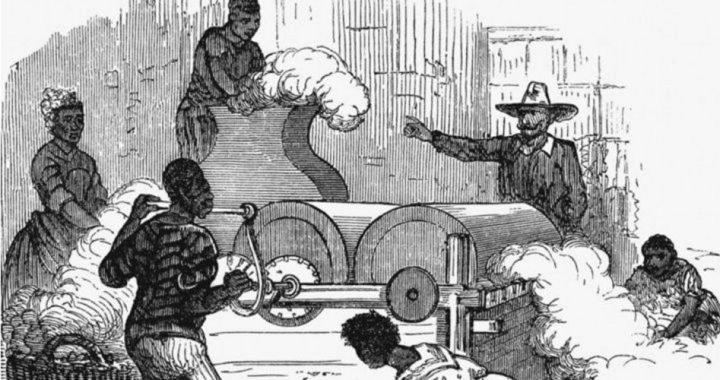
In its zeal to abolish the Electoral College, the New York Times has chosen to repeat the falsehood that the institution was created to protect the interests of the slave-holding states.
In a December 19 article entitled “Time to End the Electoral College,” the newspaper argues that the Electoral College is an “antiquated mechanism” for electing the president. And of course in support of its position, it makes the usual arguments, such as that Americans would prefer to elect the president by popular vote. “For most reasonable people, it’s hard to understand why the loser of the popular vote should wind up running the country,” the Times insists.
Taking that sentence apart, the writer insinuates that anyone who favors keeping the Electoral College is not a “reasonable” person. Second, the writer implies that Democrat Hillary Clinton, the Times’ preferred candidate, won the popular vote. Considering that candidates — including Clinton — are not campaigning to win the popular vote, but rather the Electoral College vote, the “popular vote” is not necessarily indicative of what it would have been if the candidates were trying to win it. After all, a football game plan would be quite different if field goals counted four points instead of three, or if total yardage were the way a winner was determined, rather than touchdowns, field goals, and safeties. Besides all that, it takes a majority of the electoral vote to win the presidency, not just a plurality. Clinton did run first in the popular vote, but she did not win a majority of the popular vote. If the country opted to go to a popular vote system, one would think that we would want a candidate who actually won a majority of that vote, that is, if the “will of the majority” is considered so important to detractors of the Electoral College, such as the New York Times.
And what’s this about “running the country?” Certainly, the president of the United States is a powerful figure, but he or she is not given the power in the Constitution to “run the country.” The president is the chief executive of the U.S. government and the commander-in-chief of the armed forces, but that person has no more power to tell a private citizen what to do than anyone else. There are fortunately still many things that happen in our society that neither the president nor any governmental person, at any level has any authority to decide. However, the desire for a president chosen by national popular vote is quite compatible with the modern drift toward an imperial presidency. Witness how many civilians routinely refer to the president as “my commander-in-chief,” even though that term refers only to the president’s role in command of America’s armed forces.
But perhaps the worst argument made by the Times in its denunciation of the Electoral College — and really about the founding of the country itself — is that the Electoral College was created to perpetuate the institution of slavery. The newspaper calls it a “living symbol of America’s original sin.”
The Times argues, “When slavery was the law of the land, a direct popular vote would have disadvantaged the Southern states, with their large disenfranchised populations. Counting those men and women as three-fifths of a white person, as the Constitution originally did, gave the slave states more electoral votes.”
The reality is that the creation of the electoral vote system was to protect states with smaller populations from domination by states with larger populations. The writer of the Times’ editorial is either historically ignorant, or is deliberately deceptive. Virginian James Madison was among the leaders at the Constitutional Convention in bringing forth a plan for congressional representation that would give more votes in Congress to the more populated states, replacing the system then in use by the Articles of Confederation, in which each state had one vote in Congress, regardless of its population.
The proposal was, in fact, called the “Virginia Plan.” It would have created a two-house legislative branch, with both houses chosen according to a state’s population. At the time, Virginia was by far the most populous state, with 747,610 persons counted in the first federal census of 1790. Even if the slave population had been subtracted from this count, Virginia still had 454,983 persons, far greater than Massachusetts, the next most heavily populated state with 378,787.
Yet, the Times falsely asserts that “a direct popular vote would have disadvantaged the Southern states.” But the two largest states, Virginia, which had almost 300,000 slaves, and Massachusetts, which had none, both favored the Virginia Plan in the early days of the convention. Clearly, slavery had little to do with the Great Compromise, which created one house (the House of Representatives) wherein a state’s number of representatives would be determined by population.
Another common misunderstanding, repeated by the Times, is that the Constitution counted slaves as three-fifths of a “white person,” and that this provision “gave the slave states more electoral votes.” The apportionment of representatives in the House of Representatives was determined by all persons — not just voters — living in a state, which would include all legal residents, whether man, woman or child, citizen or non-citizens, white or black, who were living within the borders of a particular state. The states with large slave populations wanted all the slaves counted, so as to give themselves a greater representation in the House of Representatives. In contrast, it was the states with smaller numbers of slaves (only two states had no slaves at the time of the first federal census) that objected to counting any of the slaves.
So the Three-Fifths Compromise was not to give the slave states more representation, but rather to reduce some of the impact of counting larger slave populations found in the South. And it is also important to note that the wording of the Constitution was not “three-fifths of a white person,” but rather three-fifths of non-slaves. At the time of the Constitution’s adoption, there were thousands of free blacks, whose numbers were not fractionalized by that compromise.
What does all this have to do with the Electoral College?
Under the Constitution, no national elections were contemplated — not for Congress, and not for the president. Because the government created by the Constitution was to be a federal republic, the states were expected to elect both the Congress and the president. The selection of the president by electors followed the pattern of the people in the states electing members of the House of Representatives and the state legislatures of each state choosing the members of the Senate. Each state would be entitled to two U.S. senators, regardless of its population, and each state would be allowed to choose a number of representatives, according to its population determined after each decennial federal census.
The delegates did not want Congress to choose the president because this would make him a creature of that body, and would lessen his ability to check its power. Therefore, the delegates created a system wherein the states would choose electors who would then choose the president. How many electors would each state receive? It was determined, in keeping with the Great Compromise earlier in the Convention, that each state legislature could choose, by whatever method they so determined, a number of electors equal to their combined numbers of representatives and senators. The electors would not meet as a national body, but rather in their state capitals. The term “Electoral College” was a later invention. Over the course of time the system has evolved, and today presidential electors are chosen by state popular vote, and not by a national popular vote. The election of the president is just as democratic as the election of the House of Representatives, or the election of the Senate. In short, it is a good example of the form of government created by the Constitution: a federal republic.
Writing in the Federalist Papers, Alexander Hamilton described the system devised for electing the president through electors, though not perfect, as “excellent.” He stated, “The mode of appointment of the Chief Magistrate of the United States is almost the only part of the system, of any consequence, which has escaped without severe censure, or which has received the slightest mark of approbation from its opponents.”
And it had nothing to do with slavery.



